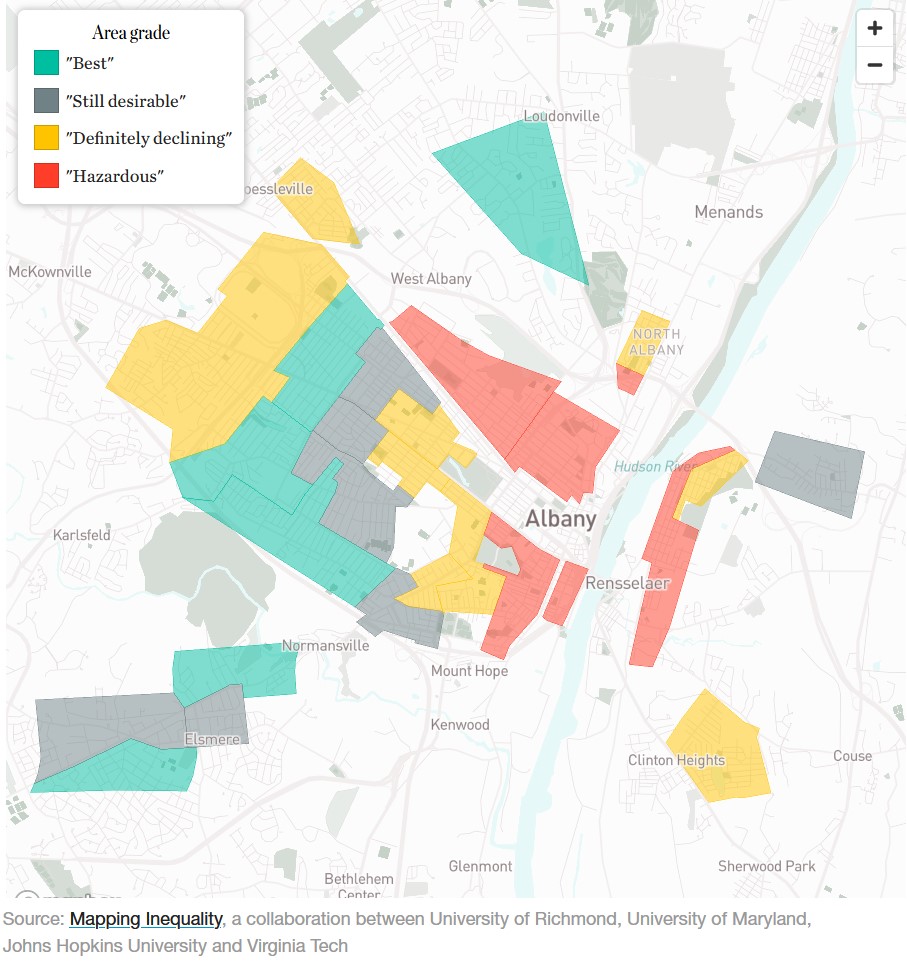Redlined America

This detailed history of redlining in New York’s capital city is an excellent de facto response to Andrew Sullivan pretending not to even understand the concept of white supremacy:
Black residents comprise nearly a third of the city of Albany’s population, but the majority live in only three neighborhoods: West Hill, Arbor Hill and the South End. These are, quite literally, at the heart of the city: Bordering its downtown business core and government center, they are rich with history that’s celebrated in murals and street names honoring local heroes such as Henry Johnson; small businesses like Allie B’s Cozy Kitchen with decades of service to their neighbors; and dozens of community groups like Grand Street Community Arts and Youth FX that rally to fight various forms of injustice, reduce crime and conflict, give voice to young talents, establish green spaces, and distribute free books to students.
But many residents are just trying to get by and survive in these neighborhoods, which also have the city’s highest poverty rates and lowest percentages of homeownership.
The confluence of these demographic and economic inequities is no accident: This landscape was mapped out almost a century ago in a way that has locked in racial disparities.
Mapped out, that is, in a literal sense: Parts of the city were “redlined” beginning in 1938 as part of a post-Depression survey conducted by the federal Home Owners’ Loan Corp., an entity established to stem the tide of home foreclosures.
Officials composed maps of hundreds of U.S. cities that categorized certain neighborhoods based on what local banks and realtors perceived to be the market for real estate investment. Those deemed too “hazardous” for investment were shown in red.
When Albany’s map was produced, West Hill, Arbor Hill and the South End were the only neighborhoods to be redlined. All three were at the time predominantly white, but poor and made up of European immigrants. After Jasmine Higgins’ family and others began fleeing the Jim Crow South, the skin color of most residents in those zones changed. But the practices and policies of banks, landlords, various layers of governments and other powerful interests largely controlled by white people remained the same — and blocked Black residents from growing generational wealth.
I strongly recommend the whole thing.
You can still a similar story about countless American cities, big and medium and small. (My colleague Rebecca Thorpe is working on a project about the violent, willful destruction of safe working-class and middle-class Black communities in Chicago that looks spectacular.) What’s striking about redlining, as Richard Rothstein has observed, is that it wasn’t even the all-too-familiar American story of massive de facto inequities existing under the cover of formal legal equality; it was completely explicit discrimination against minority neighborhoods. And obviously you would have to be an abject moron to think that the effects of denying mortgage insurance and isolation neighborhoods with urban freeways and de-industrialization will magically disappear once the explicitly discriminatory policies are no longer in place. “White supremacy” is what we’re describing here. You’re welcome, Andrew!


